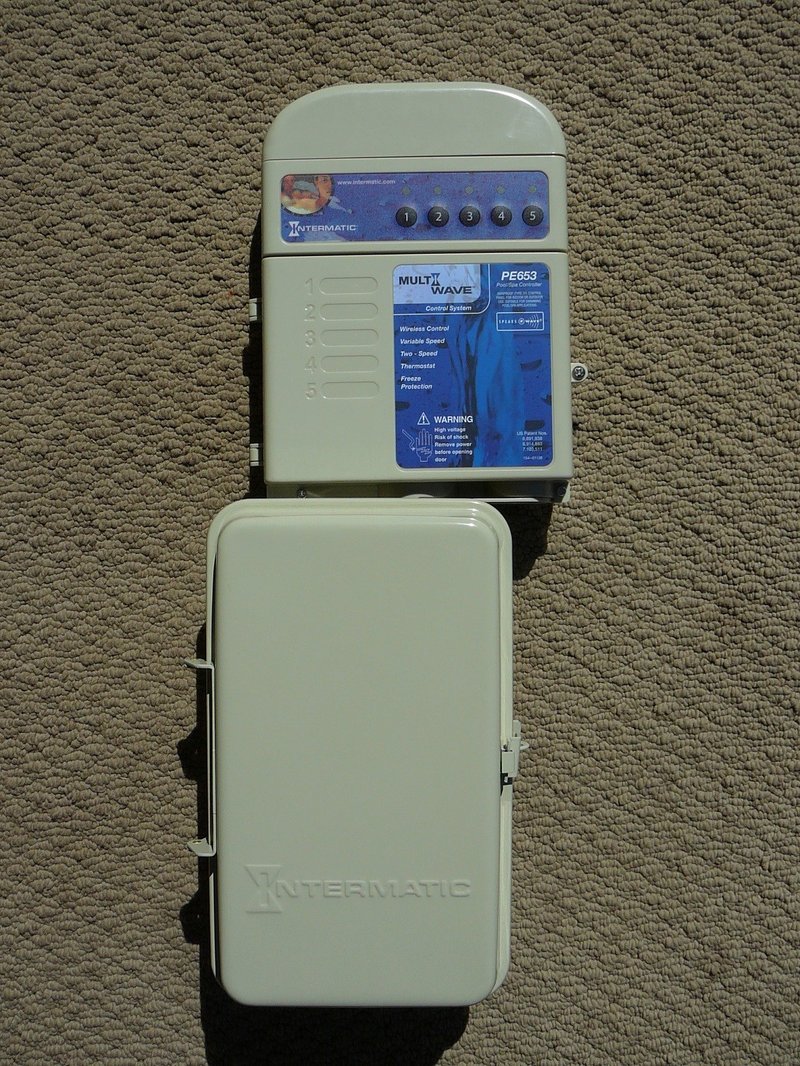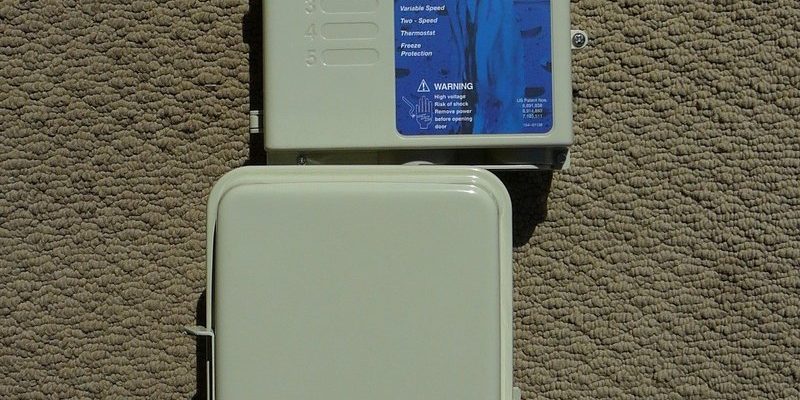
Honestly, it’s a little like bringing your favorite TV remote out to the pool. You know it should stay dry, but sometimes, practicality and fun collide—and things get wet. Intermatic is a well-known brand in the pool and spa world, offering remotes specifically made to handle steamy, splashy environments. Still, not all spa remotes are created equal. Let me walk you through how waterproof these remotes actually are, what their limits look like, and most importantly, how to use them safely around your spa.
What Makes a Spa Remote “Waterproof”?
Before you start tapping away while relaxing in your hot tub, it’s important to get clear on what “waterproof” really means. Not every device that’s advertised as “waterproof” can survive the same conditions. There’s a big difference between a remote that can handle a few splashes and one that can be fully dunked underwater.
Manufacturers use an IP rating system (Ingress Protection) to spell out how well electronics resist water and dust. A remote with a rating like IP67 is considered both dust-tight and waterproof for up to 30 minutes in one meter of water. But, here’s the catch: not all Intermatic spa remotes come with explicit IP ratings printed on them. You might actually need to dig into the instruction manual or product info to find these details.
In practice, Intermatic remotes designed for spas are usually *water-resistant*, not truly submersible forever. They’re made to withstand the occasional splash, quick rainstorm, or damp hands—but regular underwater use can eventually get the better of even the best-sealed battery compartments. If you’re picturing tossing your Intermatic remote into the hot tub after your dog fetches a stick… maybe pump the brakes.
How Intermatic Spa Remotes Handle Water Exposure
You might be wondering, “Can I actually drop my Intermatic remote in the water and have it still work?” The short answer: For a quick splash—probably yes. For deep-sea diving—not so much. Intermatic crafts its spa remotes with durable, sealed designs to repel water during typical spa use. Think of it like a raincoat: it’ll keep you dry in a drizzle, but a deep dive in the pool is another story.
Here’s how these remotes generally handle exposure:
- Rubberized seals and gaskets help keep water out of the battery compartment and electronic parts. This is what lets you handle the remote with wet hands or control your spa from the edge—even with puddles around.
- Shock-resistant shells help in case you drop it or step on it (hey, it happens). However, cracks or a poorly closed battery lid can make it much easier for water to sneak inside.
- Quick rinses or splashes usually aren’t an issue. But a remote left floating or sunk in the spa will eventually let water in, especially if it’s not completely sealed after a battery change or repair.
Let me explain with a quick scenario: if you’re lounging with friends and a rogue cannonball lands your remote near the jet stream, you’ll probably be fine—just dry it off. But if your kid uses it as a pool toy, you might end up troubleshooting why your spa lights won’t turn on later.
Safety Tips for Using Intermatic Spa Remotes
Mixing water and electronics isn’t usually a great idea—unless you know exactly what you’re doing. Here are some straightforward tips to keep you (and your Intermatic remote) safe:
- Keep the remote above water. Even if it’s water-resistant, don’t make it a habit to submerge the remote. This is especially true if you’ve opened the battery compartment recently.
- Always check the battery cover. Make sure it’s tightly sealed after changing batteries. A loose cover is an open invitation for leaks.
- Dry off wet hands as much as possible before grabbing the remote. It’s made to handle dampness, but why risk it?
- Store it somewhere safe when not in use. A simple storage bin, a dry ledge, or even a weatherproof holder can make a big difference in long-term lifespan.
Here’s a tip from years of backyard spa parties: designate a little “remote station” away from the main splash zone. This simple habit can prevent most oops-moments.
Common Problems and Troubleshooting
No matter how careful you are, a spa remote near water will eventually have its moments. Maybe the buttons stop working, the lights won’t sync, or you can’t reset the settings when you need to. Most of these issues boil down to water sneaking inside or battery problems.
Let’s break down a few common fixes:
- If your remote gets submerged: Take out the batteries immediately. Dry out the inside with a soft cloth and let it air out in a warm, dry spot for at least 24 hours.
- If your remote won’t pair or sync: Inspect for moisture in the battery compartment or behind the buttons. Any dampness can short out the electronics, making code entry or pairing impossible.
- If the buttons feel sticky or unresponsive: Debris or minerals from the water might be stuck under the keypad. Gently clean with a damp cloth—never immerse the remote to clean it.
Honestly, most Intermatic spa remote issues can be traced back to small amounts of water getting where it shouldn’t. So if you’re ever troubleshooting a weird glitch, your first check should always be for moisture.
Comparing Intermatic Spa Remotes to Universal and Other Brands
You might be tempted to look at universal remotes or knock-off brands, especially if you need a quick replacement. But not all spa remotes are built equally—especially when it comes to water resistance.
Here’s what I’ve noticed:
- Brand-specific remotes like Intermatic are designed with spas and pools in mind. They tend to have better waterproofing, more rugged casings, and are coded specifically for common spa systems.
- Universal remotes might claim to work “everywhere,” but often aren’t built for the same wet environment. Even if they can pair or sync with your spa, their resistance to water is usually much lower.
- Batteries and parts are easier to replace and maintain with major brands. If something does go wrong, you’ll probably have an easier time finding troubleshooting guides or replacements for Intermatic than with a generic remote.
Here’s the bottom line: if you’re committed to poolside or spa-side convenience, stick with remotes that are purpose-built for that environment—like Intermatic. It saves you stress (and probably some money) down the line.
How to Care for Your Intermatic Spa Remote
Let’s be real: a spa remote isn’t cheap, and you’re probably not eager to replace it every season. Taking a few minutes after each soak can make a big difference in lifespan and reliability.
Here’s how to baby your remote:
- Regularly wipe it down with a dry cloth after use. This keeps mineral buildup or soap residue from sneaking into cracks.
- Check the battery compartment monthly. Even if you haven’t changed the batteries, inspect for condensation or little pools of water.
- Keep a spare battery handy. Most Intermatic spa remotes use standard batteries, but a dead battery at midnight will make you wish you’d planned ahead.
- Avoid harsh chemicals. If you’re cleaning your spa area, keep the remote far away from bleach, sanitizer sprays, or anything else that could dissolve those seals.
Think of your remote like your car keys: you don’t toss them in the pool, right? Treating your Intermatic spa remote with a little respect will help it work smoothly, whether you’re syncing up the jets or just dimming the lights for a relaxing evening.
What to Do If Water Gets Inside
Sometimes—despite all your best precautions—water finds a way in. Maybe someone dropped the remote, or maybe a seal finally gave out. Don’t panic.
Here’s what you should do:
- Take out the batteries immediately. Leaving them in could cause corrosion or a short circuit.
- Gently shake out as much water as possible. But don’t go so wild that you damage any internal parts.
- Let the remote dry in a warm, airy spot. You can set it near (but not on) a gentle heat source like a vent or a fan for a day or two.
- Resist the urge to use a hair dryer on high or put it in the oven—the heat could melt plastic parts or mess with the code circuitry.
If, after all that, your spa remote still won’t pair, sync, or reset—well, it might be time to look at a replacement.
Honestly, a little mercy goes a long way. Sometimes, electronics bounce back after a surprise swim. But if you’re in doubt about safety or performance—better safe than sorry.
Why Waterproofing and Safety Matter for Spa Remotes
At the end of the day, the whole point of a spa is to relax—not to stress about your gadgets taking a swim. That’s why understanding how waterproof (or “water-resistant”) your Intermatic spa remote really is, matters more than you might think.
Besides obvious stuff like comfort and convenience, there’s a real safety issue here. Water exposure can cause battery leaks, electrical shorts, and in rare cases, a shock hazard. Will your remote explode in your hand if you get it wet? Not likely—but why risk it? Just a little common sense goes a long way.
Here’s my two cents: protect your remote like any other spa accessory. Use it wisely, store it dry, and check those seals every now and then. Your spa setup—and your Saturday night—will run smoother because of it.
Closing Thoughts
So, is the Intermatic spa remote waterproof? In a word: mostly, but with boundaries. It’s designed for life near water, not in it. As long as you keep it above the waves, check those battery seals, and treat it with a bit of care, you’ll enjoy hassle-free control over your spa for a long time. And if you ever run into problems, you’ll know how to troubleshoot safely—so your only worry is whether you’ve got enough bubbles for your next soak. Now, go relax—you’ve earned it.
